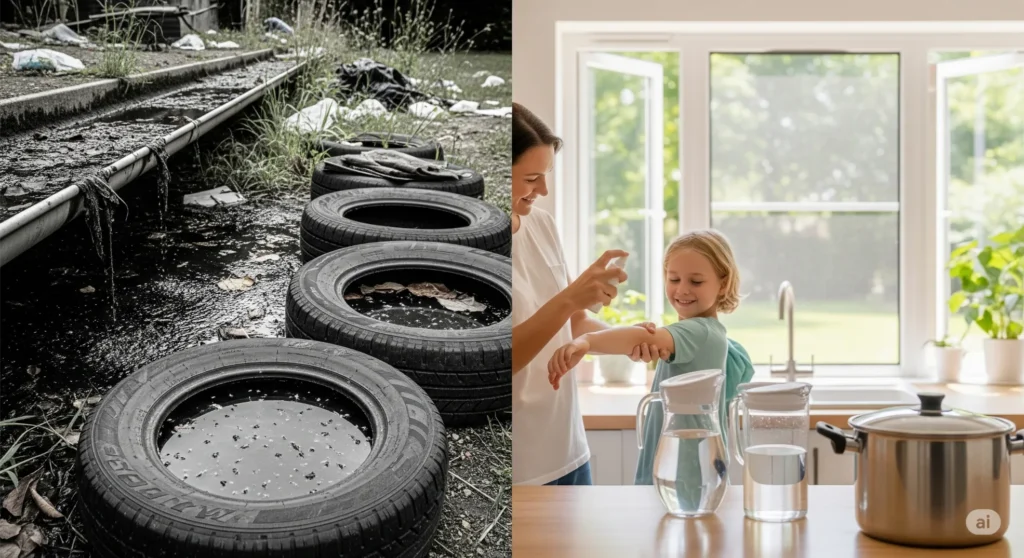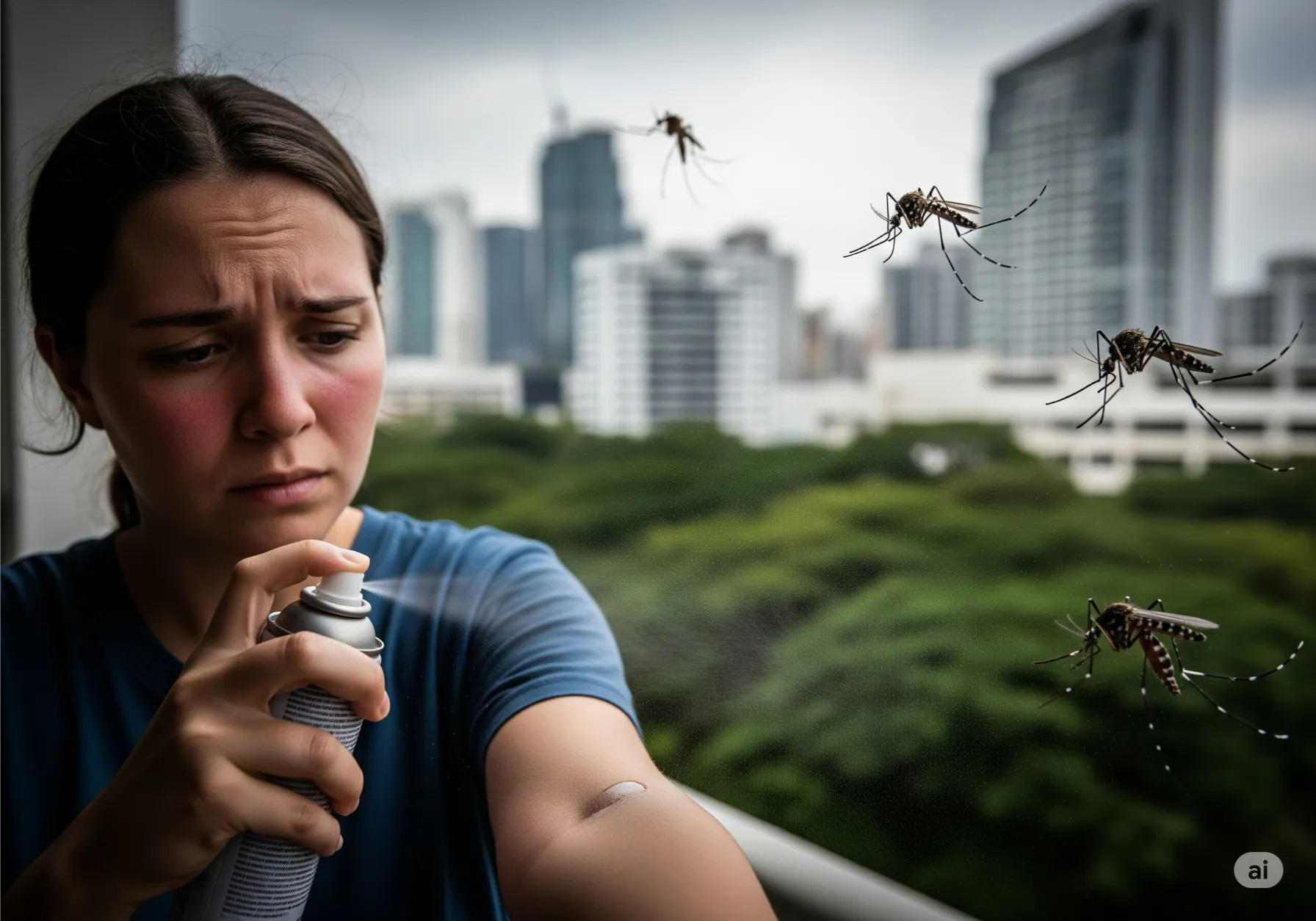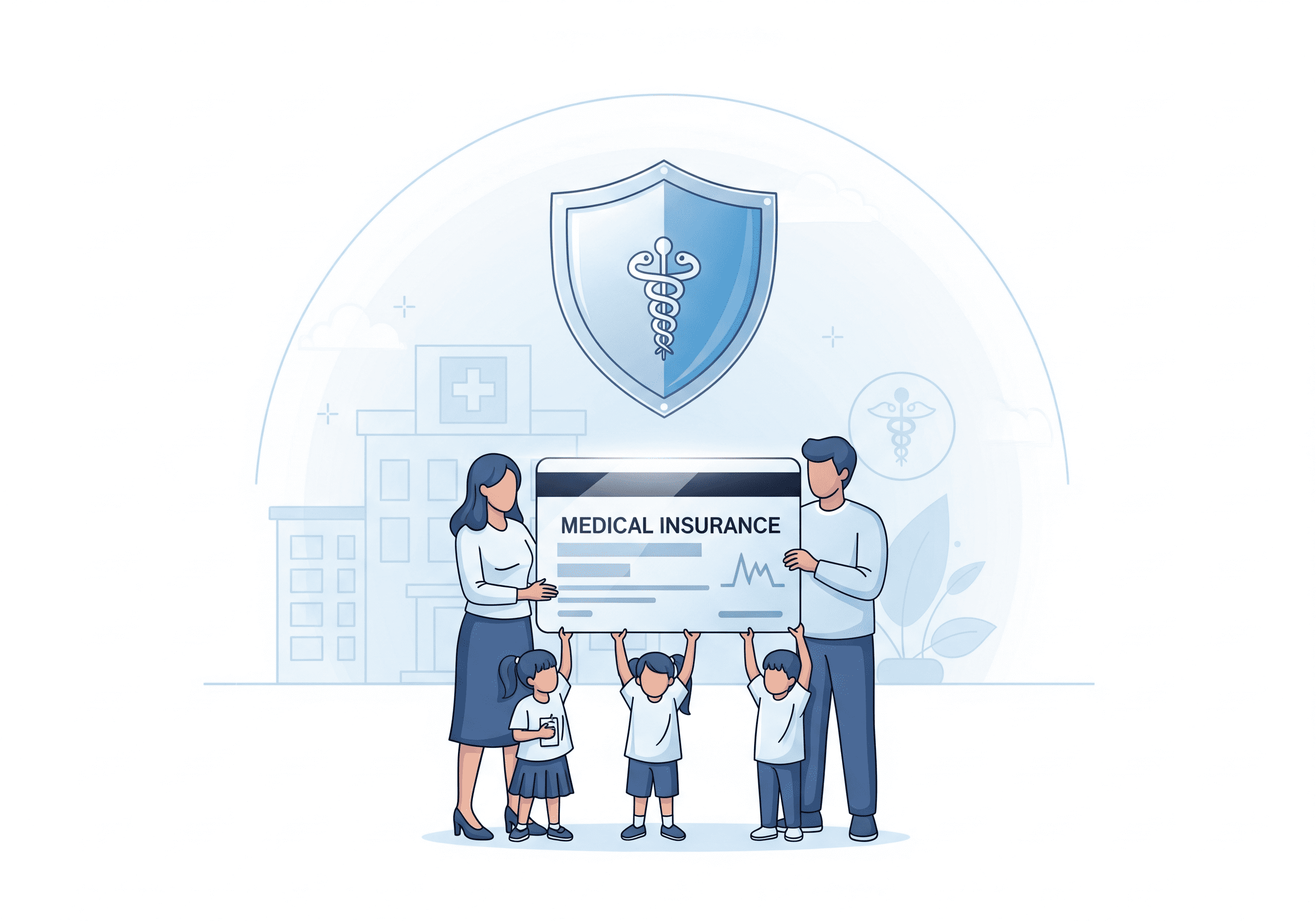Dengue fever, often referred to simply as Dengue, is a mosquito-borne viral infection that has emerged as a significant public health concern across the globe, particularly in tropical and subtropical regions. Transmitted primarily by the bite of the Aedes aegypti mosquito, and to a lesser extent by Aedes albopictus, Dengue can manifest in a wide spectrum of illness, ranging from mild, self-limiting flu-like symptoms to severe and potentially life-threatening complications. Understanding the intricacies of Dengue, including its causes, symptoms, diagnosis, treatment, and most importantly, prevention strategies, is crucial in mitigating its impact on individuals and communities.
The Culprit: The Dengue Virus and Its Vectors
Dengue fever is caused by any one of the four distinct serotypes of the Dengue virus (DENV-1, DENV-2, DENV-3, and DENV-4), all belonging to the genus Flavivirus and the family Flaviviridae. Infection with one serotype provides lifelong immunity to that specific serotype but offers only transient and partial protection against the other three. This phenomenon of sequential infection with different serotypes is significant because it increases the risk of developing severe Dengue, also known as Dengue Hemorrhagic Fever (DHF) or Dengue Shock Syndrome (DSS).
The primary vectors responsible for transmitting the Dengue virus to humans are female Aedes aegypti mosquitoes. These mosquitoes are well-adapted to urban environments, typically breed in artificial water containers found around homes (such as flowerpots, discarded tires, and water storage containers), and are most active during the daytime, with peak biting activity in the early morning and late afternoon. Aedes albopictus, while a less efficient vector, can also transmit the virus and is more adaptable to cooler climates, contributing to the geographical spread of Dengue.
Transmission Cycle: From Mosquito to Human and Back
The transmission cycle of the Dengue virus begins when a female Aedes mosquito bites a person infected with one of the four Dengue serotypes. During this blood meal, the mosquito ingests the virus. Following an extrinsic incubation period of about 8-10 days within the mosquito, during which the virus replicates and disseminates to the salivary glands, the mosquito becomes capable of transmitting the virus to a new human host when it takes another blood meal.
Once the virus enters the human bloodstream, it replicates in target cells, including immune cells. The individual then enters the incubation period, which typically lasts for 4-10 days before the onset of symptoms. If the infected person is bitten by another Aedes mosquito during the period when the virus is circulating in their blood (viremia), the mosquito becomes infected, and the cycle continues.
The Spectrum of Dengue Illness: From Mild to Severe
Dengue fever presents with a wide range of clinical manifestations, making diagnosis challenging, especially in areas where other febrile illnesses are prevalent. The severity of the illness can vary significantly depending on factors such as the infecting serotype, the individual’s previous exposure to Dengue viruses, age, and overall health.
Classic Dengue Fever (Undifferentiated Fever):
Many Dengue infections are mild or even asymptomatic. When symptoms do occur, they typically begin abruptly after the incubation period and can include:
- High Fever: A sudden onset of high fever, often reaching 104°F (40°C) or higher, is a hallmark of Dengue.
- Severe Headache: Characteristically located behind the eyes (retro-orbital pain).
- Muscle and Joint Pain: Intense pain in the muscles and joints, often described as “break-bone fever.”
- Nausea and Vomiting: Gastrointestinal disturbances are common.
- Skin Rash: A macular or maculopapular rash may appear 2-5 days after the onset of fever.
- Swollen Lymph Nodes (Lymphadenopathy): Enlarged and tender lymph nodes.
This classic form of Dengue usually lasts for 2-7 days, and most individuals recover without complications.
Dengue Hemorrhagic Fever (DHF) and Dengue Shock Syndrome (DSS):
A small proportion of individuals with Dengue develop the more severe forms of the disease, DHF and DSS. These complications are more likely to occur in individuals who have had a previous Dengue infection with a different serotype (secondary infection), a phenomenon known as antibody-dependent enhancement (ADE). ADE is a complex immunological process where pre-existing antibodies from a previous Dengue infection can enhance the uptake of a different serotype virus into immune cells, leading to increased viral replication and a more severe immune response.
Dengue Hemorrhagic Fever (DHF) is characterized by the following:
- All the symptoms of classic Dengue.
- Hemorrhagic Manifestations: Evidence of bleeding, such as small red or purple spots on the skin (petechiae), bruising easily, nosebleeds (epistaxis), gum bleeding, or blood in the vomit (hematemesis) or stool (melena).
- Plasma Leakage: Increased permeability of blood vessels leading to leakage of plasma into the tissues, which can manifest as fluid accumulation in the chest (pleural effusion) or abdomen (ascites).
- Thrombocytopenia: A decrease in the number of platelets in the blood (below 100,000/mm³).
Dengue Shock Syndrome (DSS) is a life-threatening complication of DHF characterized by:
- All the features of DHF.
- Circulatory Failure: Signs of shock, including rapid and weak pulse, narrow pulse pressure (less than 20 mmHg), cold and clammy skin, restlessness, and decreased blood pressure.
DSS requires immediate medical intervention, as it can lead to organ damage, severe bleeding, and death if not treated promptly and effectively.
Atypical and Expanded Dengue Syndrome:
In addition to the classic and severe forms, Dengue can also present with atypical manifestations involving various organ systems. These include:
- Neurological Complications: Encephalitis, meningitis, Guillain-Barré syndrome.
- Liver Involvement: Hepatitis, leading to elevated liver enzymes.
- Cardiac Involvement: Myocarditis, pericarditis.
- Renal Involvement: Acute kidney injury.
These atypical presentations can make diagnosis more challenging and require careful clinical evaluation.
Diagnosing Dengue Fever: Clinical Assessment and Laboratory Tests
Diagnosing Dengue can be challenging in the early stages as the symptoms often overlap with other viral illnesses. Diagnosis is typically based on a combination of clinical evaluation, patient history (including travel to endemic areas), and laboratory tests.
Clinical Assessment:
Healthcare providers will look for the characteristic signs and symptoms of Dengue, including fever, headache, retro-orbital pain, muscle and joint pain, rash, and hemorrhagic manifestations. A thorough physical examination can reveal signs of plasma leakage, such as ascites or pleural effusion, and signs of shock.
Laboratory Tests:
Several laboratory tests are available to confirm a Dengue infection:
- Virological Tests:
- Reverse Transcription-Polymerase Chain Reaction (RT-PCR): Detects the presence of Dengue viral RNA in the blood during the early phase of infection (typically the first 5-7 days of illness). RT-PCR can also identify the specific Dengue serotype.
- Non-Structural Protein 1 (NS1) Antigen Test: Detects the NS1 protein, a highly conserved non-structural protein of the Dengue virus, in the blood during the acute phase of infection (up to 7-10 days). NS1 tests are rapid and widely used for early diagnosis.
- Virus Isolation: Culturing the Dengue virus from blood samples, although this is more commonly used in research settings.
- Serological Tests:
- Dengue-Specific IgM and IgG Antibodies: These antibody tests detect the immune response to the Dengue virus. IgM antibodies typically appear a few days after the onset of symptoms, peak around 2 weeks, and then decline. IgG antibodies appear later and can persist for months or even years, indicating past exposure or infection. Serological tests are useful for confirming recent or past infections and can help differentiate between primary and secondary infections.
- Hematological Tests:
- Complete Blood Count (CBC): Monitors platelet count and hematocrit levels. A decreasing platelet count (thrombocytopenia) and an increasing hematocrit (hemoconcentration due to plasma leakage) are important indicators of severe Dengue.
The choice of diagnostic test depends on the stage of the illness and the availability of resources. Early diagnosis is crucial for timely management and to differentiate Dengue from other febrile illnesses, such as malaria, Zika, and chikungunya, which may present with similar symptoms.
Managing Dengue Fever: Treatment and Supportive Care
There is no specific antiviral treatment available for Dengue fever. Management focuses on supportive care to alleviate symptoms, prevent complications, and ensure adequate hydration.
For Classic Dengue Fever:
- Rest: Adequate rest is essential for recovery.
- Fluid Intake: Maintaining hydration by drinking plenty of oral fluids (water, oral rehydration solutions, juice) is crucial to prevent dehydration.
- Symptomatic Relief:
- Paracetamol (Acetaminophen): Can be used to reduce fever and pain. Non-steroidal anti-inflammatory drugs (NSAIDs) like ibuprofen and aspirin should be avoided as they can increase the risk of bleeding.
- Cool Compresses: Applying cool compresses can help reduce fever.
- Monitoring: Regular monitoring for signs of worsening condition is important. Patients should seek medical attention if they develop severe abdominal pain, persistent vomiting, bleeding, lethargy, or restlessness.
For Dengue Hemorrhagic Fever (DHF) and Dengue Shock Syndrome (DSS):
Severe Dengue requires hospitalization and close medical management. Treatment focuses on:
- Fluid Management: Intravenous fluid replacement is critical to correct dehydration and maintain circulatory volume, especially in cases of plasma leakage and shock. The rate and type of fluids administered are carefully monitored.
- Electrolyte Balance: Monitoring and correcting electrolyte imbalances.
- Blood Transfusion: Platelet transfusions or whole blood transfusions may be necessary in cases of severe bleeding.
- Oxygen Therapy: Oxygen supplementation may be required if the patient has difficulty breathing or low oxygen saturation.
- Monitoring of Vital Signs: Frequent monitoring of blood pressure, pulse rate, respiratory rate, and urine output is essential.
- Management of Complications: Addressing any organ-specific complications that may arise.
Early recognition of warning signs and prompt initiation of appropriate medical care are crucial in reducing the morbidity and mortality associated with severe Dengue. Warning signs that should prompt immediate medical attention include:
- Severe abdominal pain
- Persistent vomiting
- Bleeding from gums, nose, or vagina
- Blood in vomit or stool
- Lethargy or restlessness
- Dizziness or lightheadedness
- Cold and clammy skin
- Difficulty breathing
Preventing Dengue Fever: A Multifaceted Approach
Given the lack of specific antiviral treatment, prevention remains the most effective strategy for controlling Dengue fever. Prevention efforts target the mosquito vectors and aim to reduce human-mosquito contact.
Vector Control Measures:
- Eliminate Mosquito Breeding Sites: This is the most crucial aspect of Dengue prevention. Regular inspection and cleaning of potential breeding sites around homes and in the community are essential. This includes:
- Emptying and scrubbing water storage containers (e.g., buckets, barrels, drums) at least once a week.
- Clearing stagnant water from flowerpots, plant saucers, discarded tires, bottles, and other objects that can collect water.
- Ensuring proper drainage of rainwater.
- Maintaining swimming pools and ornamental ponds properly chlorinated or stocked with larvivorous fish.
- Covering water storage containers tightly.
- Larviciding: Applying chemical or biological larvicides to water bodies that cannot be eliminated can help kill mosquito larvae.
- Adulticiding: In outbreak situations, spraying insecticides (fogging) can be used to kill adult mosquitoes, but this is a temporary measure and less effective against mosquitoes that breed indoors.
- Community Participation: Engaging the community in vector control activities through awareness campaigns, clean-up drives, and education is vital for sustainable prevention.
Personal Protective Measures:
- Mosquito Repellents: Using insect repellents containing DEET, Picaridin, IR3535, or oil of lemon eucalyptus (OLE) on exposed skin and clothing, following product instructions.
- Protective Clothing: Wearing long-sleeved shirts, long pants, socks, and shoes, especially during peak mosquito biting times (dawn and dusk).
- Mosquito Nets: Using mosquito nets (preferably insecticide-treated nets – ITNs) while sleeping, especially for infants, young children, and the sick.
- Window and Door Screens: Installing and maintaining screens on windows and doors to prevent mosquitoes from entering homes.
- Staying Indoors During Peak Biting Times: Reducing outdoor activities during peak Aedes mosquito biting hours.
Vaccination:
A Dengue vaccine, Dengvaxia®, has been licensed in some countries for use in individuals aged 9-45 years with a confirmed prior Dengue virus infection. However, its use is restricted due to the risk of severe Dengue in vaccine recipients who have not been previously infected.
More recently, newer Dengue vaccines, such as Qdenga®, have shown promise in clinical trials and have been approved for use in some regions for individuals regardless of prior Dengue infection history. These vaccines represent a significant advancement in Dengue prevention, but their widespread availability and implementation are still evolving.
Public Health Strategies:
Effective Dengue prevention and control require a coordinated public health approach involving:
- Surveillance: Monitoring Dengue cases and mosquito populations to detect outbreaks early.
- Early Warning Systems: Implementing systems to predict and prepare for potential outbreaks.
- Health Education and Awareness: Educating the public about Dengue transmission, symptoms, prevention measures, and the importance of seeking timely medical care.
- Integrated Vector Management: Implementing comprehensive strategies that combine environmental management, biological control, and chemical control methods in a sustainable way.
- Strengthening Healthcare Systems: Ensuring that healthcare facilities are equipped to diagnose and manage Dengue cases effectively, including severe forms of the disease.
- Research and Development: Supporting research into new diagnostics, treatments, vaccines, and vector control strategies.
- International Collaboration: Working with international organizations and neighboring countries to share information and coordinate Dengue control efforts.
The Global Burden of Dengue: A Growing Threat
Dengue fever is a significant global public health problem, with an estimated 390 million infections occurring annually worldwide. The geographical distribution of Dengue has expanded dramatically in recent decades due to factors such as urbanization, population growth, increased international travel and trade, and climate change.
The World Health Organization (WHO) considers Dengue one of the ten threats to global health. The economic and social burden of Dengue is substantial, including healthcare costs, lost productivity, and the impact on tourism and development.
Dengue in East Naokhanda, Dhaka Division, Bangladesh:
East Naokhanda, located in the Dhaka Division of Bangladesh, is situated in a region highly endemic for Dengue fever. The tropical climate, high population density, and presence of favorable breeding sites for Aedes mosquitoes contribute to the seasonal outbreaks of Dengue experienced in this area.
Public health efforts in East Naokhanda and the broader Dhaka region focus on vector control activities, community awareness campaigns, and strengthening healthcare facilities to manage Dengue cases. Residents are advised to take personal protective measures and actively participate in eliminating mosquito breeding sites around their homes.
Conclusion: Collective Action Against Dengue
Dengue fever remains a major public health challenge in tropical and subtropical regions worldwide. Understanding the virus, its vectors, the spectrum of illness, and effective prevention strategies is crucial for individuals and communities. A multifaceted approach involving vector control, personal protection, vaccination (where appropriate), and robust public health initiatives is essential to mitigate the burden of this debilitating disease. Continued research, innovation, and collective action are needed to combat the growing threat of Dengue and protect vulnerable populations.













📁 🎁 Crypto Reward: 1.0 BTC reserved. Claim today > https://graph.org/WITHDRAW-YOUR-COINS-07-23?hs=56ef51f73296e17f103dfb2637e03fb5& 📁
gjzwyi